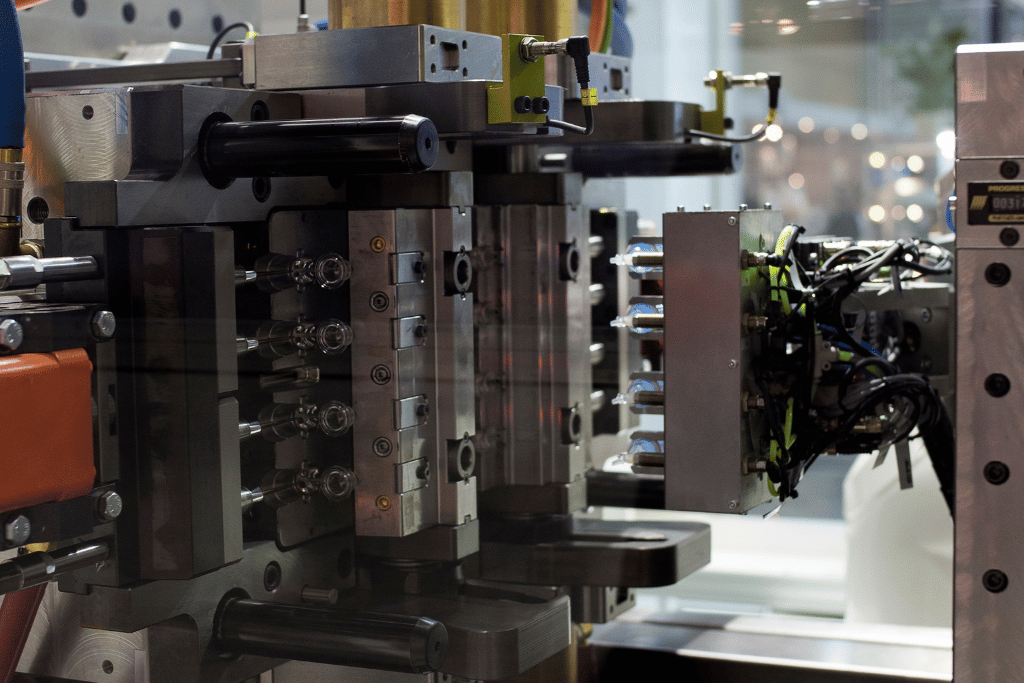Safety gear greatly protects workers in hazardous environments. Protection gear keeps people safe in a wide range of situations, from fighting fires to industrial manufacturing. Not all materials can handle tough conditions, particularly when they face high heat or freezing temperatures.
Extreme temperatures can weaken materials, causing cracks, deformations, or even complete failure. This can put workers at serious risk. Temperature-resistant plastic components help maintain safety and durability in such conditions. They are a good choice for PPE plastic equipment because they can handle heat, cold, and chemicals. By using high-quality materials, industries can improve workplace protection while extending the lifespan of safety gear.
The Need for Temperature-Resistant Plastic Components in Safety Gear
Certain industries require protective gear that can function under extreme temperatures. When PPE plastic equipment is used in these workplaces, it needs to be made to last through rough circumstances.
These are some industries where high temperatures are common:
- Firefighting – Firefighters are exposed to high heat while battling fires. Their gear must remain strong and durable without melting or becoming brittle.
- Manufacturing & Construction Industries – Factories that involve molten metals, chemicals, or extreme cooling processes need reliable safety gear for workers.
- Aerospace – Aircraft and space travel involve rapid temperature shifts. PPE plastic equipment used in these environments must not crack or lose strength under sudden temperature changes.
- Oil and Gas Industry – In drilling and refinery work, workers are exposed to extreme heat and cold, so they need long-lasting security.
- Cold Storage and Freezers – Employees working in freezing conditions need gear to remain flexible instead of becoming stiff or brittle.
Traditional materials, certain metals or rubber may fail when exposed to extreme heat or cold. Metals can become too hot to handle while rubber may lose flexibility. The more stable option is temperature-resistant plastic components. They don’t lose their shape, strength, or ability to do their job. Plastic injection molding services help make unique plastic parts that fit safety gear, which keeps workers safe in dangerous situations.
Why Temperature Resistance Matters in Safety Gear?
Extreme heat or cold can cause safety gear to fail, putting workers in danger. The purpose of protective gear is to keep workers safe, but materials that break down, crack, or melt can’t do that.
Using temperature-resistant plastic components in PPE plastic equipment offers several benefits:
- Longer Lifespan – Safety gear works well for a long time, so it doesn’t need to be replaced frequently.
- Consistent Performance – These plastics don’t lose their defensive qualities even when they are under extreme temperatures.
- Cost-Effective – Investing in durable materials reduces costs associated with damaged or weakened safety gear.
- Comfort for Workers – Lighter and more flexible than metal, plastic-based safety gear improves ease of movement and reduces strain on workers.
Many industries now rely on plastic injection molding services to create customized plastic parts for safety gear. The ability to manufacture durable, heat-resistant components helps industries maintain high safety standards.
How Temperature-Resistant Plastics Perform Under Extreme Conditions?
Protective gear must withstand tough conditions without losing its effectiveness. Even when exposed to extremely high or low temperatures, temperature-resistant plastic components keep their strength, flexibility, and longevity. Unlike standard materials that may degrade, these plastics provide consistent protection in challenging workplaces.
Durability Under High and Low Temperatures
- High Heat Resistance – These plastics do not soften or warp when exposed to intense heat making them ideal for environments – firefighting, welding, and industrial manufacturing.
- Cold Resistance – Many things break and become weak when it’s cold outside. Temperature-resistant plastics stay bendable so safety gear works well even in subzero conditions.
- Impact Strength – Whether in hot or cold environments, these plastics absorb shocks and impacts without breaking or losing their structural integrity.
Protection Against Material Degradation
- Melting Prevention – Traditional plastics may soften or deform under high temperatures but advanced plastic formulations remain stable.
- Crack Resistance – These plastics resist fractures even when exposed to sudden temperature shifts.
- Brittleness Prevention – Extreme cold often causes materials to become stiff and prone to breaking. Temperature-resistant plastics perform exactly as expected and stay flexible.
Many types of PPE plastic equipment use temperature-resistant plastic components to provide reliable protection in extreme conditions. Helmets and face shields maintain their shape and impact resistance in high heat and freezing temperatures. Gloves and protective suits are good at blocking very hot or cold temperatures but still permit easy movement. Respiratory equipment keeps its shape in hot industrial places and cold outdoor areas so it works well in dangerous workplaces.
Manufacturers make high-performance components with injection molding for harsh situations by using plastic injection molding services. These plastics provide reliable protection keeping workers safe in demanding industries.
Real-World Applications of Temperature-Resistant Plastics in Safety Gear
The use of PPE plastic equipment made from advanced plastics has increased across multiple industries. Several applications highlight the value of temperature-resistant plastic components in protective gear:
- Firefighter Helmets and Shields – Exposed to extreme heat, these must withstand intense temperatures without melting or breaking.
- Protective Gloves and Suits – Used in hazardous environments where exposure to heat, cold, or chemicals is common.
- Respiratory Equipment – Must retain structural integrity even in high-temperature work areas or freezing conditions.
- Industrial Face Shields and Goggles – Protect against heat and chemical splashes in various workplaces.
- Foot Protection in High-Heat Industries – Workers in foundries, welding shops, and chemical plants can avoid getting burned or hurt by wearing boots, and shoe covers made of heat-resistant plastics.
- Cold Weather PPE – In freezing conditions, protective suits, gloves, and helmets must retain flexibility and insulation properties without becoming brittle.
The durability of temperature-resistant plastic components allows workers to perform tasks with confidence. Manufacturers make unique tools to meet the needs of their industries by using plastic injection molding services.
The Ongoing Need for Reliable Materials
Industries that require PPE plastic equipment must focus on materials to provide long-term reliability. By providing longevity under harsh conditions, temperature-resistant plastic components have changed safety gear.
As technology advances, plastic injection molding services continue to develop better materials for protective equipment. Some innovations in plastic technology include:
- Self-Healing Polymers – These advanced plastics can repair minor cracks and damage, extending the life of safety gear.
- Smart Temperature-Responsive Plastics – Materials that change their features to adapt to different temperatures are better at keeping you safe.
- Recyclable High-Performance Plastics – Sustainable options to reduce environmental impact while maintaining durability.
Investing in high-quality plastics makes the workplace safer and cuts down on the costs of repairs and replacements. Temperature-resistant plastics will be even more useful in the future, making workplaces safer and more productive.



